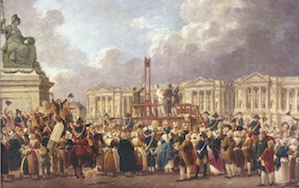Since 2010, production has scaled back in favour of quality but the biggest help has been the exponential rise of a new market that is willing to pay decent prices. China has now become the leading export market by volume (538,000 hectolitres and grew 23% in 2012) – soaking-up more than double of second place Germany. “Over the last two years, production has been lower and the consumption has been high so the price of bulk wine has gone up,” reports CA Grands Crus’ Budin. “Achieving a higher price means they can improve the quality. It’s good because everyone must make money in a healthy industry.”
Though elevated prices doesn’t help Bordeaux’s ability to compete in price-sensitive markets. “The concern about China is that claret prices are jumping,” says Yvon Mau’s Thomas. “I have seen bulk prices move on a quarterly basis – it’s a problem.”
At co-operative Val d’Orbieu, consultant winemaker Olivier Dauga works across a range of wines, and argues his generic Bordeaux AC and AC Superior wines can be every bit as good as the classified growths – which he argues is a historical not quality differentiator. Dauga says his wines are made with the most modern maceration techniques and achieve good levels of concentration, unlike some Bordeaux wines of old. Still, Dauga says for the majority of the winemakers in Bordeaux, there is no democracy. Jokingly he refers to Robert Parker – a man he respects – as a “dictator” who will “never taste my wines”. “I would introduce a system of testing for wines every five years,” he argues. Dauga practises the democracy he preaches. Last year he set up an annual competition for young winemakers – offering a prize of a year of free consultation and three new oak barrels (these cost around €650-700 each). In a wine world of privilege and inequality, Dauga is every inch a man of the people.
With an RRP of £9.99, Yvon Mau’s new range of red, white and rosé, Petit Grant hovers above the arbitrary volume definition, but according to the company’s Thomas, the wines will be on promotion at around a third off. Competing with the New World will always be Bordeaux’s Achilles heal. Chile, Argentina and Australia have economies of scale and sunny climates that can produce fruit-driven wines at fruit-barrow prices. Bordeaux has small wineries and big climatic variations so consistency – the cornerstone for any brand – has always proved a challenge. Dauga argues that vintage variation is not a problem these days by dint of improved winemaking and grape selection but Yvon Mau’s Thomas, said the region needs to “work harder to en engage with consumers”. He reports Yvon Mau scoured one third of the region’s Bordeaux AC to find the right grapes for their Petit Grant range.
Rosé outlook
According to Antoine Moueix’s Lecomte, rosé is one of the big stories in Bordeaux. The style recently overtook white wine in the popularity stakes in France, and while it tends to be made by co-operatives that have the relevant expertise and equipment, it is seen as a big opportunity for Bordeaux’s bulk producers. “The world is drinking more rosé,” says Lecomte. “Provence is out of inventory so now 10% of value of Bordeaux AC is rosé – even if Bordeaux is not the best place to make it. Yvon Mau’s Thomas chips in: “Bordeaux rosé is now 20% of rosé consumption in France. It’s an opportunity in the UK that we must take this year – Bordeaux rosé is a category that does not exist in the UK.”
Sauternes decline
According to producers, Sauternes sales are in decline and have been for five years. Given that production costs are about twice as much as claret and yields are six times less, a lack of demand does not bode well for the noble wine’s future. CA Grands Crus’ Le Naour explains the difficulty: “We used to sell all Rayne Vigneau through en primeur and liverable but in the last five years it has been hard to sell through both. So we are
showing our wines more and more and we are trying to educate the consumer on the different types of Sauternes consumption. But even Sauternes lovers have a limited perception of how it should be drunk.” For Le Naour the challenge is to create fresher, more acidic styles, distancing her wines from the cloyingly rich specimens sometimes found in the region.
For the group’s Budin, the solution for Sauternes could – like practically every facet of Bordeaux – be China. “It will become a big market for Sauternes. The Chinese love sweet wine styles – it’s closer to their taste and it fits well with their food. A small change in Chinese consumption would have a big impact in Sauternes.”
It seems, whether in the Sauternes market, or at the value and volume ends of the claret business, China and Bordeaux’s futures are inextricably linked.




